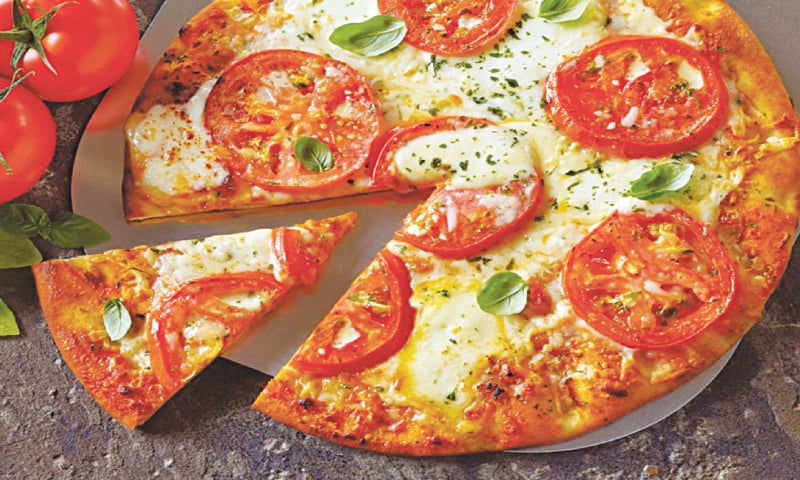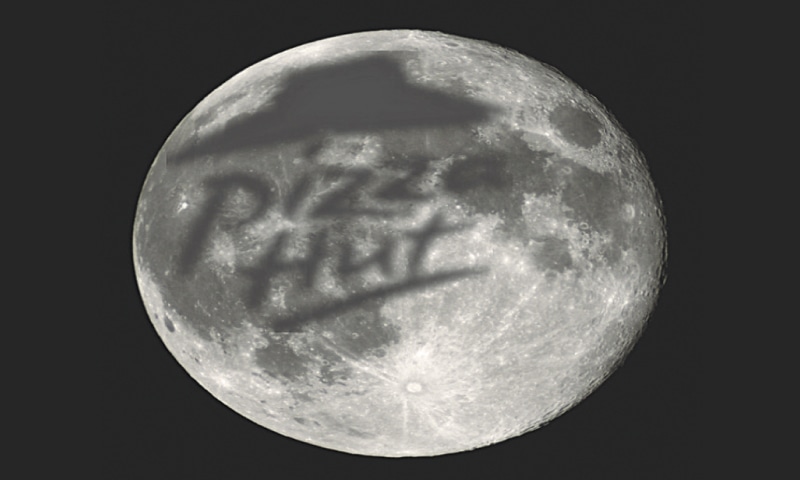Everyone has a favourite candy, dessert or food item. However, they may not know everything about their favourite dish — like where it got its name, how it was fi rst made, or how it has evolved ever since! So today we bring to you the origin and unbelievable background stories about some of your favourite foods, whether it is a pizza, a chocolate bar or a salad. You’ll be amazed to read the story behind them all.

Marshmallows
Marshmallows are a favourite treat for many people. They date back to as early as 2000BC and were considered a delicacy deemed worthy only for the royalty. During those times, Egyptians made individual marshmallows by hand, by extracting sap from a mallow plant and mixing it with nuts and honey.
This delicious sweet developed a new form when, in the 1800s, candy makers in France took the sap from marshmallow plants and combined it with egg whites and sugar. The mixture was whipped by hand and took the form of the marshmallow we all know today.
Later, candy makers replaced the sap taken from the marshmallow plant and egg whites with gelatine, this enabled the marshmallow mixture to maintain its form and reduced the labour intensive process of extracting the sap from the mallow plant; thus, marshmallows maintained their beloved elastic and spongy qualities much longer than they had previously.
But in 1948, Alex Doumak took a huge step forward in technology by creating an extrusion process in which marshmallow substance was pressed through tubes, cut into equal pieces, cooled and then packaged. No longer were they made by hand.

Lollipops have strange name origins
Since ancient times, candies and sugary sweets have often been put on the ends of sticks for easy eating. It became popular in the 17th century to enjoy boiled sugar treats that were pressed onto sticks to eat. This treat was soft candy rather than hard, but it was one of the forerunners of the modern lollipop.
In the 20th century, the owner of McAviney Candy Company often brought home for his children the leftover sticks used to stir batches of candy. He began selling these sticks in 1908, which coincided with the invention of the first automated machine that put sticks in hard candy.
In 1908, George Smith began marketing the modern version of a lollipop through his confection company, Bradley Smith Company. He coined the term “lollipop” in 1931, after a famous racehorse of the time called Lolly Pop.
When lollipops stopped being produced during the Great Depression, the name fell into the public domain. The name also meant something like “tongue slapper” because “lolly” was Old English slang for “tongue” and “pop” meant “to slap.”
Whether the name originates from a horse or Old English slang, or it was simply made-up, the world still loves to call it lollipop!

Nachos
There actually was a person named Nacho! In 1943, a man named Nacho was working at a club in Piedras Negras, Mexico. The club was located close to the border of Eagle Pass, Texas. One night, when it was time to close down the restaurant, a bunch of soldiers and their wives turned up for dinner. Nacho didn’t want to turn them away, so he let them sit, however, he couldn’t find the chef and, as it was the closing time, there wasn’t enough food to serve all.
All he could manage with whatever he had at his disposal was a dish he made by cutting tortillas in pieces, sprinkling them with cheese and jalapenos, and popping them in the oven. The dish earned a lot of fame and was named ‘Nacho’.

Cotton candy was promoted by dentists
Cotton candy was originally called fairy floss, and the first version of cotton candy machine was patented by John C. Wharton and William J. Morrison in 1899. Then they introduced the machine and their new candy concoction at the St Louis World’s Fair in 1904. They sold nearly 70,000 boxes of candy at that fair.
As cotton candy is made entirely from caramelised sugar, most people don’t realise that such a sweet overload will probably send you to a dentist sooner rather than later.
Interestingly, Morrison was a dentist. To be fair, he was also a lawyer, an author and a civic leader. But still, a dentist creating cotton candy has to raise some eyebrows!
In 1900, cotton candy was introduced to the Ringling Brothers by Thomas Patton, who had invented a more modern version of the cotton candy machine. Even later, Josef Lascaux, another dentist, created another version of the machine that he never officially patented. He did, however, coin the name “cotton candy.”

Margherita Pizza
In 1889, the Queen Margherita of Savoy and her husband, King Umberto I, were traveling in Naples. A chef named Raffaele Esposito made three special pizzas for the royal couple at his restaurant. The Queen loved the pizza made with tomato, basil and mozzarella over others, which also mimicked the colours of the Italian flag. The chef then named the pizza after the queen, and the recipe is still followed.

Chew on!
People have been chewing gum in various forms since ancient times. There’s evidence that some northern Europeans were chewing birch bark tar 9,000 years ago, possibly for enjoyment as well as such medicinal purposes as relieving toothaches. The ancient Maya chewed a substance called chicle, derived from the sapodilla tree, as a way to quench thirst or fight hunger.
In North America, the Indians chewed spruce tree resin, a practice that continued with the European settlers who followed. In the late 1840s, John Curtis developed the first commercial spruce tree gum by boiling resin then cutting it into strips that were coated in cornstarch to prevent them from sticking together. By the early 1850s, Curtis had constructed the world’s first chewing gum factory, in Portland, Maine. However, it didn’t taste great and became brittle when chewed. Curtis and others who’d jumped into the gum business after him subsequently switched to ingredients such as paraffin wax.
Later, in the 20th century, chewing gum made William Wrigley Jr. one of the wealthiest men in America. Wrigley started out as a soap salesman and after moving to Chicago in 1891, he began offering store owners incentives to stock his products, such as free cans of baking powder with every order. When the baking powder proved a bigger hit than the soap, Wrigley sold that instead, and added in free packs of chewing gum as a promotion. In 1893, he launched two new gum brands, Juicy Fruit and Wrigley’s Spearmint which are still famous around the world.

Fettucini Alfredo
The Italian favourite has been around for centuries, but it supposedly took on its current form around 1914 when Alfredo di Lelio upped the amount of butter in the recipe in an attempt to find something his wife would enjoy eating.
Di Lelio realised that his buttery cheese sauce was extraordinarily tasty, so he started serving it to tourists at his Rome restaurant and named the dish after himself.

Caesar salad
Most people confuse this dish to have been named after the famous king Julius Caesar, however, that does not stand true.
The most reliable origin of the dish can be traced to an Italian, Caesar Cardini Caesa, who lived in San Diego but operated a restaurant in Tijuana, Mexico. He is said to have created the dish during a Fourth of July rush in 1924 that led to low stock in the Tijuana restaurant. He found some basic ingredients in his kitchen, like olive oil, parmesan cheese, lettuce, egg, etc. He assembled all in a bowl and tossed them to make a delicious salad. The dish has earned fame since then.

Snickers
The ‘Snickers’ bar has an interesting story behind its name; although the Snickers bar was not the first peanut, caramel and nougat candy bar, it was one of the most popular and most enduring of its time.
Frank and Ethel Mars, founders of Mars, Inc., had great success with the ‘Milky Way’ bar before it and were open to developing new candies. Thus after three years of development, the ‘Snickers’ bar was released in 1930.
Just months before the release of their new candy bar, Ethel’s favourite horse, Snickers, died. This was a hard loss for her as she adored her horse. So she and her husband named the new candy bar “Snickers” in their horse’s honour.
Interestingly, the farm where Snickers had lived was called the Milky Way Farm, another chocolate bar by the same makers.

Food facts
• In the 1800s, the sap of mallow plants were not only used to make marshmallows, but doctors also used this sap to soothe colds and sore throats.
• The world’s largest lollipop maker, Tootsie Roll, turns out 16 million lollipops per day.
• Lollipops can be used to carry medicines. Flavoured lollipops containing medicine are marketed for children, and are also used in the military due to the fast-acting ingredients.
• In 1998, in one of the wildest marketing stunts, Pizza Hut had the idea to burn their logo into the surface of the moon with high-powered lasers. Luckily, common sense prevailed. Upon consulting experts, they learned that the necessary technology was still some years off. Moreover, for earthlings to be able to see the logo with the naked eye, it would have had to be the size of Texas. In the ensuing years, Pizza Hut has made several deals with the cash-strapped Russian space programme, including emblazoning their logo on a rocket and delivering a pizza to the International Space Station.
• In 1958, the song “Lollipop” by female vocal quartet
The Chordettes reached #2 and #3 on the Billboard pop and R&B charts, respectively.
The song was a worldwide hit and has been prominently used in several movies and TV shows.
• The world’s largest lollipop was made by See’s Candies in 2012. It was 7003 pounds, over four feet in length and five feet in height, and had a 12 foot stick.
• The name Kit Kat originated from London in the late 17th century, when a literary club met at a pie shop owned by pastry chef Christoppher Catling. The group was called the Kit Kat club and took its name from an abbreviated version of the owner’s name.
Published in Dawn, Young World, March 12th, 2015














































Dear visitor, the comments section is undergoing an overhaul and will return soon.